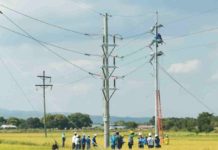
MANILA – Philippine monetary officials continue to see within-target average inflation this year amid risks arising from higher global oil prices and the impact of El Niño.
In a briefing Friday, Bangko Sentral ng Pilipinas (BSP) assistant governor Francisco Dakila Jr. said the inflation’s trajectory continues to point towards deceleration until the third quarter of the year, and then go back towards the mid-point in the latter part of the year.
“That’s driven by base effects,” he said.
In 2018, inflation surpassed the government’s 2 percent to 4 percent target band from 2018 to 2022, and peaked at 6.7 percent primarily due to supply side factors, such as lack of supply of rice and several agricultural products.
However, with the help of the total of 175 basis points increase in the BSP’s key rates, as well as non-monetary policy measures, such as the immediate release of rice stocks from the warehouses of the National Food Authority (NFA), inflation decelerated and ended at 3.3 percent last March.
In the first quarter of this year, inflation averaged at 3.8 percent, same as the first quarter of last year but lower than the 5.9 percent in the last quarter of 2018.
BSP’s policy-making Monetary Board (MB), during its rate setting meet last March, placed the BSP’s average inflation forecast for this and next year at 3 percent.
Citing results of the BSP survey on private economists last March, BSP Department of Economic Research (DER) Director Dennis Lapid, during the same briefing, said mean inflation forecast among private economists showed a decline in their average inflation forecast for this year to 3.3 percent from 4.1 percent in the survey done last December.
For next year, the mean forecast declined to 3.4 percent from 3.8 percent previously, while initial forecast for 2021 is at an average of 3.4 percent.
Dakila said the BSP’s inflation forecast will be closely studied in the next policy meeting of the MB on May 9.
To date, monetary officials consider as upside risks to inflation the higher prices of oil in the international market and the impact of the El Niño, which is now seen to be longer-than-expected.
Dakila said they have not seen to date the impact of El Niño on prices of agricultural products, among others, while rice prices are going down as a result of the rice tariffication.
“For me, that is something that we need to watch out for,” he said, adding that balance of risks is even. (PNA)



